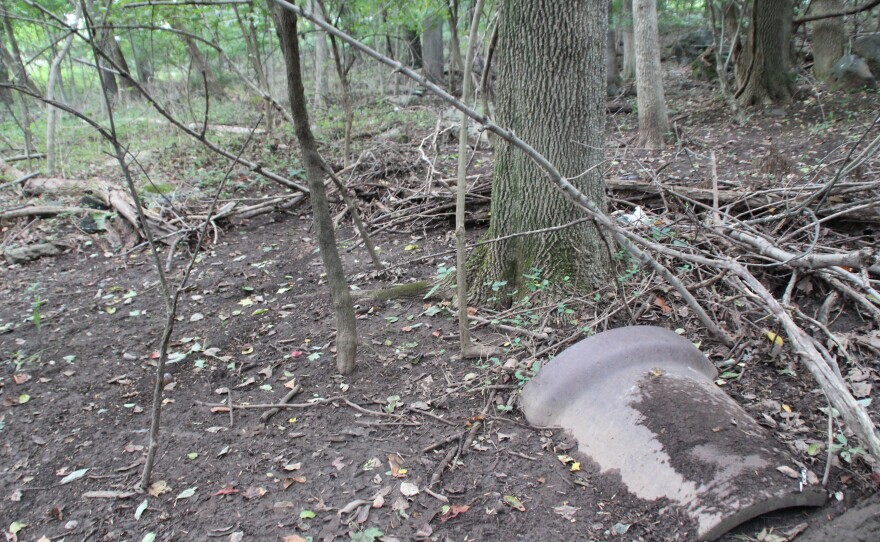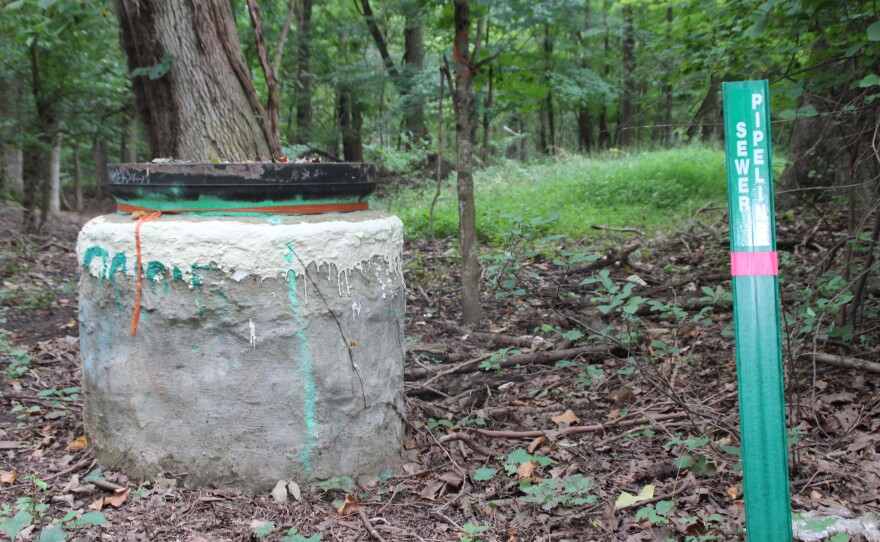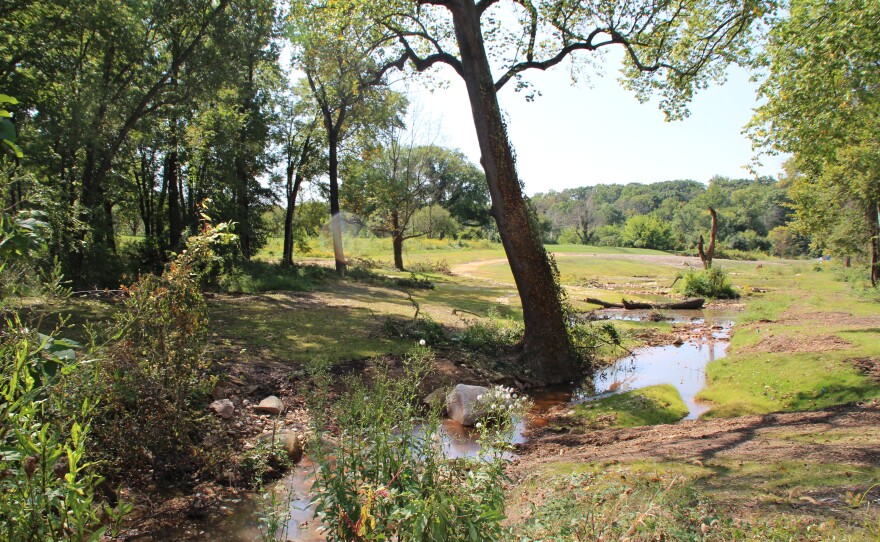The recently revised sewage collection consent decree requires Baltimore to replace aging sewer pipes by 2030. But first, the city needs to rebuild streams whose banks have eroded over time.
About 10 to 20 feet behind the single-family row houses on Flannery Lane in northwest Baltimore is Powder Mill Run, a tributary of the Gwynns Falls. The small, trickling stream seems harmless, but Sujay Kaushal, an earth science professor at the University of Maryland, warned that in a storm it turns into a roaring river.
The sewer pipes run parallel to the stream at the land’s lowest point as gravity pushes the water downhill, he said.
“It’s kind of like this underground matrix where you have all these pipes that are flowing close to streams even now as we walk,” Kaushal said.
The steep incline from the street to both the stream bank and the sewer line is scattered with debris from old car wrecks and garbage.
A sign on a nearby protruding manhole cover identifies the entrance to the sewer. Kaushal pointed out crumbling pieces of concrete as the gurgling stream can be heard nearby.
"This was covering the stream as well and basically over time it eroded away and its gone now," said Kaushal.
The water from the stream eroded the sewer pipe, even pushing large pieces of it above ground. Kaushal said that damage to the pipe floods nearby homes.
According to the Baltimore City Law Department, there have been a little more than 1,500 claims of sewage back-ups in residents' homes over the past 10 years.
Bonessi - City Sewer Claims - 2007-2017 by Jamyla Krempel on Scribd
In the consent decree, the city agreed to replace those residents’ sewer pipes, but first the streams need to be restored to prevent further erosion.
“So this is what we all think of as a stream — we think of a bed and bank channel form," said Keith Underwood, the founder of Underwood and Associates, an ecological restoration firm.
While showing off a stream restoration project at the National Arboretum in Washington, Underwood said the traditional idea of a stream, like the one in Gwynns Falls, is not naturally occurring.
“We now know that water didn’t take the shortest route to the end," Underwood said. "It took the longest most complicated route, that is really difficult for people to understand.”
The old method to restore a stream involved chiseling a narrow, deep stream, and forcing the water down a strict guided path. Underwood invented a new, more natural way to restore a stream.
“You’ll see that there are no banks, that it is a form of highly integrated stream and wetlands,” said Underwood.
He uses a mixture of materials such as fine sand, wood chips, gravel, and silica quartz cobble stone to allow the water to go in the direction it wants to fall. Underwood said his approach is unique.
“These projects are bent on water running through the landscape as opposed to carrying surface water over the landscape," said Underwood.
Underwood creates a curved chain of ponds with water only about two feet deep. Kevin Smith, head of the resiliency and restoration program at the Maryland Department of Natural Resources, said the layout spreads and slows the water down.
“So if you have infrastructure like a sewer line adjacent to a stream like this," Smith said. "The opportunity for that stream to move over and erode into that is diminished greatly.”
The city will restore streams wherever possible, according to Baltimore Department of Public Works spokesman Jeffrey Raymond.
But Smith said the city’s restoration process will probably not be regenerative like Underwood’s design.
“What we’re going to be doing is stabilizing stream systems more than restoring stream systems,” Underwood said.
He plans to carve out a channel for the stream, using rocks to support it, and maintain it every few years, he said.
By comparison, Underwood said, his plan requires very little maintenance.
"We’re allowing the water to filter through the landscape so that all those processes can rebuild," Underwood said. "Then the plants and animals and microbes will inhabit the site.”
Back at Powder Mill Run with its traditional stream system and eroded sewer pipe, Kaushal said the city needs to think about the sewer and stream systems holistically.
"In terms of urban sustainability, we need to think of this all as an interconnected system," he said.
Restoring the stream is just the first step in the city’s long process of replacing ancient sewer pipes.











